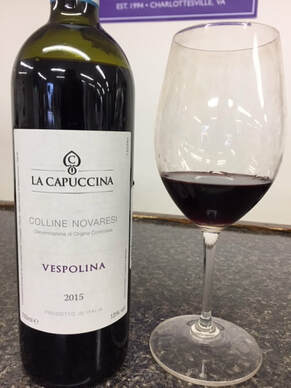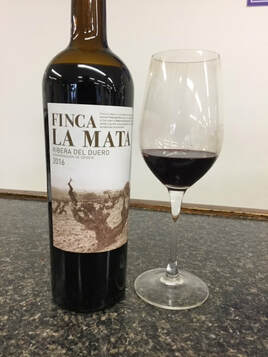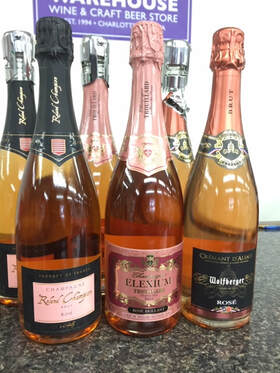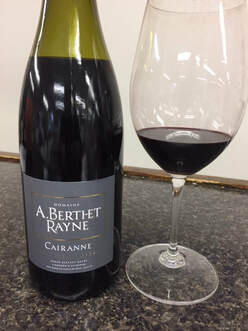 The towns of Novara and Vercelli are the 'major' population points for what is referred to as the 'Alto Piemonte' region, close in distance to the famous cities of Milan, Turin, and Asti, but vastly different cultures. The history is largely agricultural until after World War II when there was a massive push towards industrialization. Aside from some crops like rice, most agricultural industries shrank to virtually nothing; vineyards had once been the equal in volume to those around Barolo and Barbaresco, but at its lowest point were reduced to less than 1,500 total acres. In recent years there has been a rural renaissance evolving where more people are rediscovering their roots and exploring many pursuits once abandoned, which includes redeveloping many vineyard sites. Inovaters like Gianluca Zanetta are leading the charge, developing the small La Capuccina resort and curating the Alto Piemonte specific cuisine and ambiance. Over time his love for the region's wines pushed him to purchase small parcels in the Fara DOC to make his own bottlings. Normally a winery of such limited production would have little need or desire to export, but fortunately for us we have importers in Virginia with the passion (and strong persuasive skills) to pry free a small amount for us. Vespolina is the workhorse grape in the region, with Nebbiolo usually featured in the more famous and expensive wines, but is increasingly important as the need for affordable wines increases as the reputation grows. This is about as high as the quality gets for the varietal, especially at this price. Smoky red cherry aromas with a huge flavor wheel's worth of complimentary savory notes on the nose; dark flowers, wild game, blacker fruits and spices. The palate gets drier and darker with lots of plum skin, black pepper and tart red fruit flavors, and a very fine earthy texture to the finish from the tannins. This is a wine that shows its wild side, less fruit forward and 'crowd-pleasing' than a Barbera, but more accessible than a Nebbiolo that may need 4-6+ years in the cellar to loosen up. This craves gamey meats to pair with it, lentil soup, or hearty stews with lots of beans and rustic flavors.
0 Comments
 After spending most of Wednesday living inside a Slushee machine, I'm sure folks in central Virginia dipped into their stock of wines and need to replenish today. A nice warming Spanish red like this should do the trick for many of you. This wine is part of a project by noted winemaker Isaac Fernandez, who has about 25 years worth of experience working in the Ribera del Duero for many wineries. His own work focuses on recognizing single properties that can reflect the diversity in the region that often isn't observed in larger production wines. Finca la Mata is the name of the 60 year old vineyard planted in gravely/sandy soil overlying clay. The photo on the label shows off the gnarled bush-trained vines, but it also shows how finite the property is, showing approximately 2/3 of the property. This wine IS this place, and nothing more, and even if it became world famous they can't make more. Which is fine by us, as undiscovered wines are the best deals. A lovely aroma of blueberry skins and graphite on the nose, as well as a touch of vanilla tones from the oak aging, but nowhere near overdone, actually fading well into to background with some time open. The mouthfeel is rich which pulls out lots of the dark red fruit intensity as well as some cocoa tones, but also has surprising minerality thanks to the soils, which pulls out the blueberry skin notes on the finish. While a big wine full of flavor, it keeps its balance and poise, even a hint of elegance behind the intensity. A fun wine with lots of time ahead of it to evolve.  In need of a little 'pink drink' for your Valentine's Day plans today or this weekend? Hope you haven't made your purchase plans just yet, as we have a trio of bubbles that are sure to scratch your itch one way or another. Even within the three bottles there is a diversity of character and style due to the grapes used and the way the rose color is achieved. All three wines use the 'methode champenoise' procedure to get the carbonation in to the wine, using a second fermentation in the bottle to trap the gas versus injecting the gas into the wine en masse. The second way is faster and cheaper, but also far less complex and refined, as well as much more likely to give you a headache. All three wines use Pinot Noir to some extent. Wolfberger is a 100% Pinot Noir wine that spends about 15 months on the lees for secondary fermentation before disgorgement, which is significantly longer than required for a Cremant d'Alsace. It shows through in the flavor, with extra weight on the palate behind the strawberry and savory herb tones. While it won't be confused with the true Champagnes, it provides loads of pleasure and is an exceptional value for those looking to celebrate a little more simply. Both the small grower house Champagnes are built from the three predominant grapes of the region; Pinot Noir, Chardonnay, and Pinot Meunier, and are aged for at least 3 years before disgorgement. Roland Champion creates the rose color by blending equal portions of pressed juice with no color from all three varieties (color comes from the grape skins, and only gets into the juice when allowed to soak for a period of time) and vinified together, then blended before bottling with a small portion of fully red colored Pinot Noir. The Pinot is also aged longer than the rest of the blend before being used, which brings a more complex and nuanced flavor to the fruit. Trouillard blends equal part of the three varietals together, all with similar color components to achieve a younger, fresher red fruit character, but adds a reserve of about 35% of the juice from the previous year before bottling to give a bit more consistency to the wine from vintage to vintage. Which will be YOUR favorite?  Sometimes a run of success for a wine can be a bit of a burden. The two previous vintages for this bottling were wildly successful, receiving strong press from multiple sources and selling like gangbusters, especially for the price point. As all good vintages are finite and must come to an end, the distributor moved quickly from one to the next, and now has the newest vintage in house and ready to go. We tasted on it, enjoyed it just as much as the previous two, and brought it in as soon as the last of the 2016 sold through. The problem for some seems to be that the wine has arrived ahead of its press, and have had a bit of 'wait and see' approach to trying the 2017. We are equally excited with it as we were when we first tasted the 2015 and 2016, so we think we are ahead of the hype in getting behind the newest vintage, and think you will agree once you taste it. A blend of Biodnamic farmed Grenach, Syrah, and Carignan aged in tank and bottle give the wine plenty of accessible fruit even being fairly young, with lots of black fruits, currants and cocoa tones with hints of savory earth. The texture is fairly full with a noticeable dusty texture to the red fruits due to the unfiltered texture, which brings out the cocoa tones on the palate as well. The juicier fruit notes aren't quite as pronounced in some ways as the previous vintages, but they do start to show through more as the wine is opened up, so it may just be as much about the newness of the wine to the bottle as it is vintage variation. The wine certainly doesn't lack for anything, and can stand on its own merits as a high quality value. Make your own call and get this into your drinking rotation before the rest of the world catches on! |
The Best of the Best.We offering free tastings on these wines in the store every Thursday and Friday, and a 10% discount off the retail price through the duration of the day. Come on by and give them a try! Archives
July 2024
Categories |
Location |
|

 RSS Feed
RSS Feed